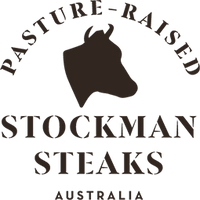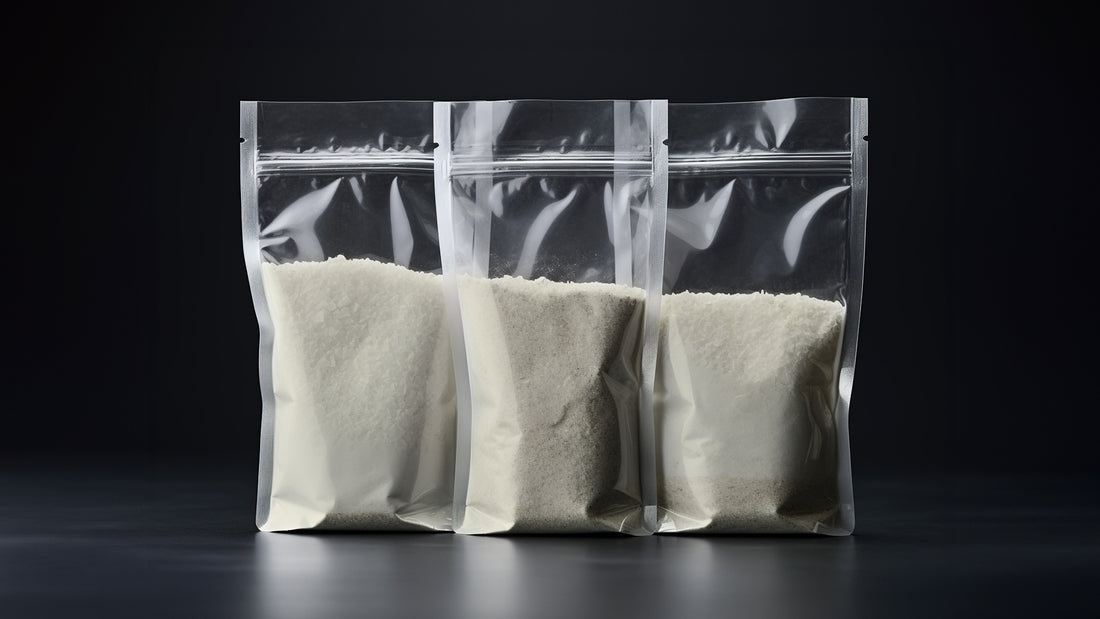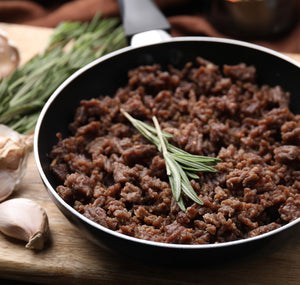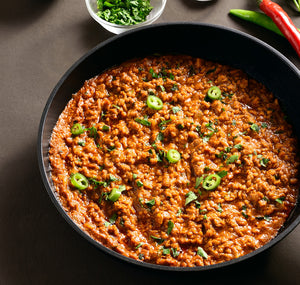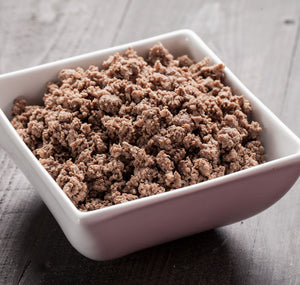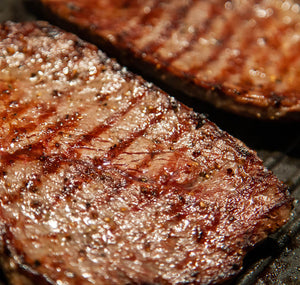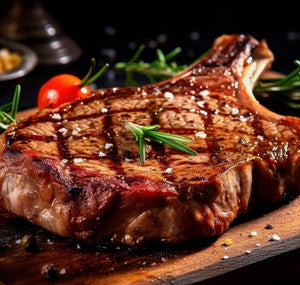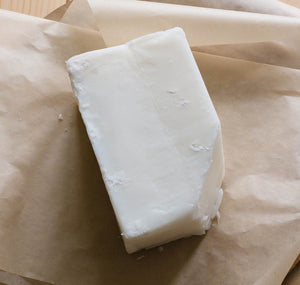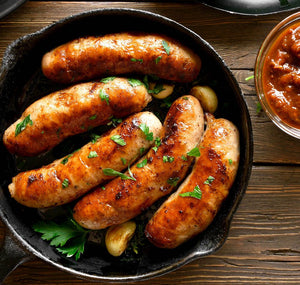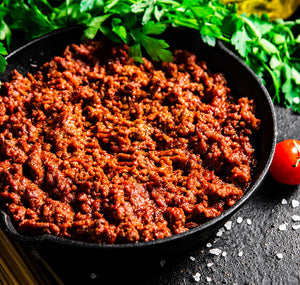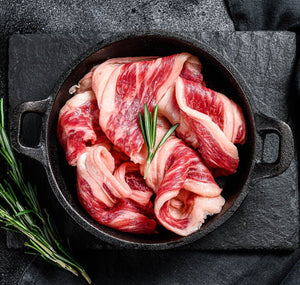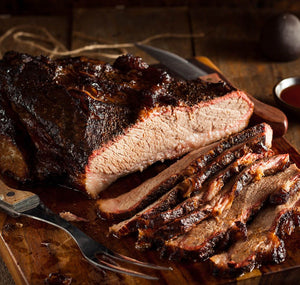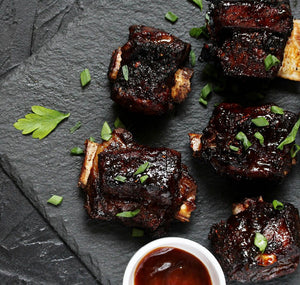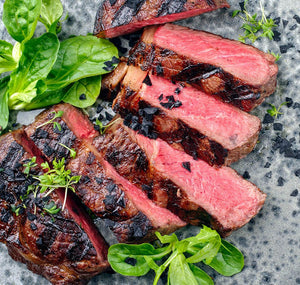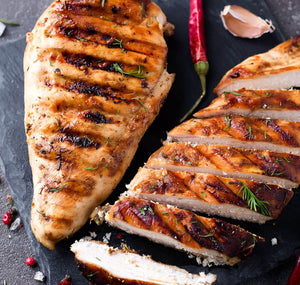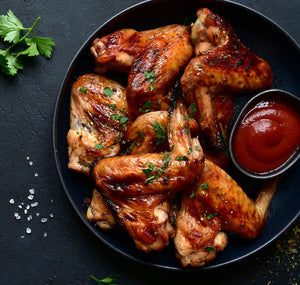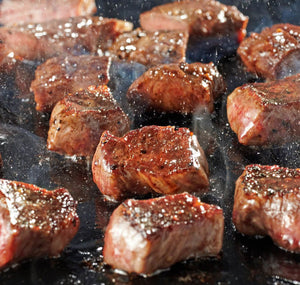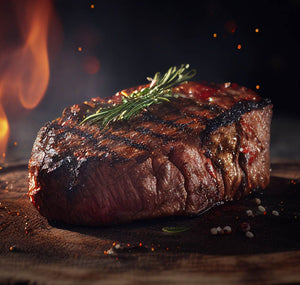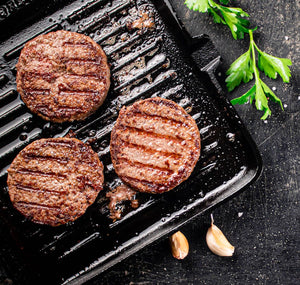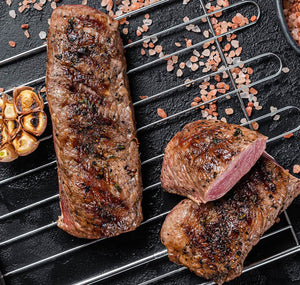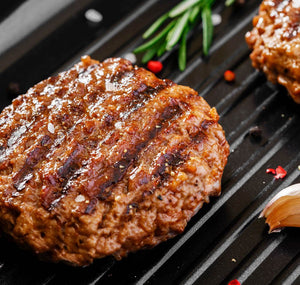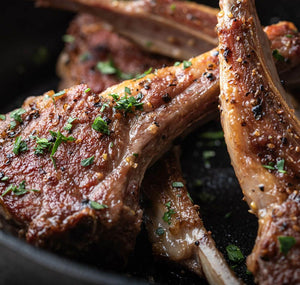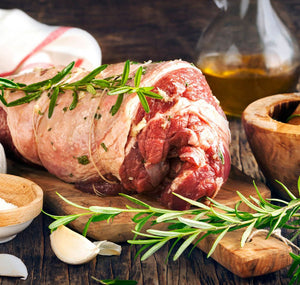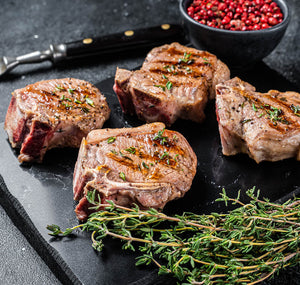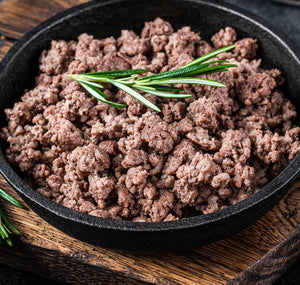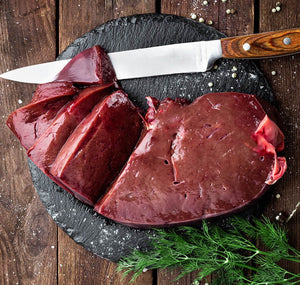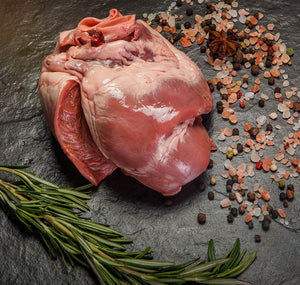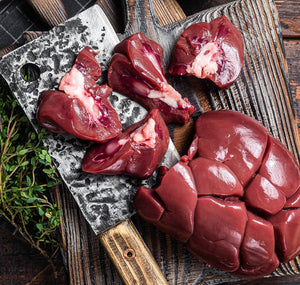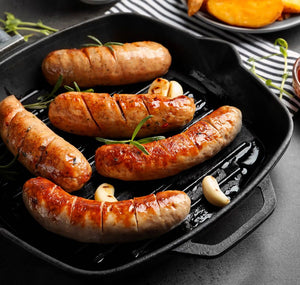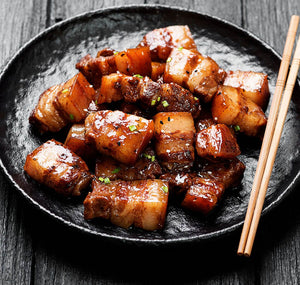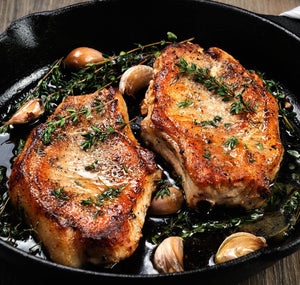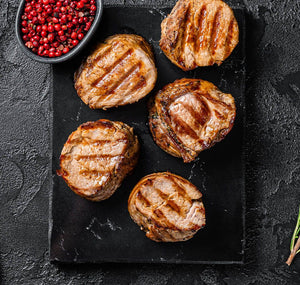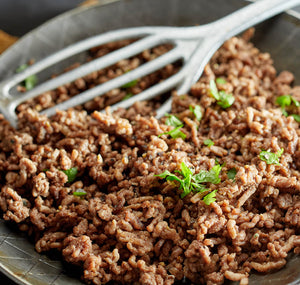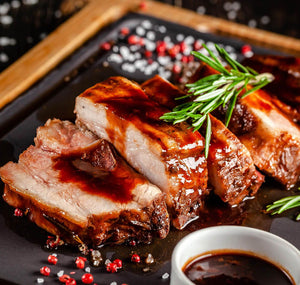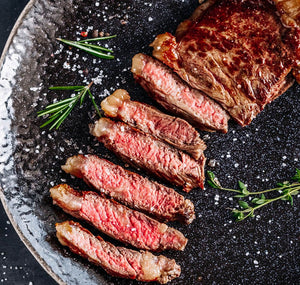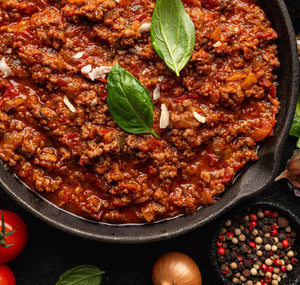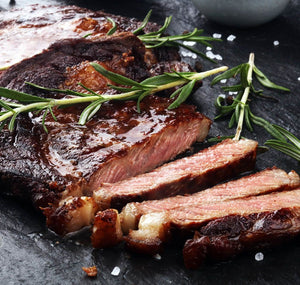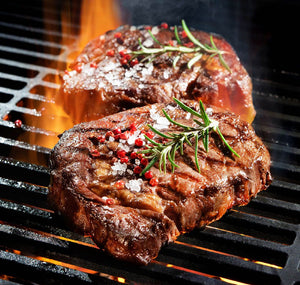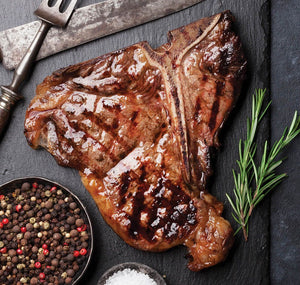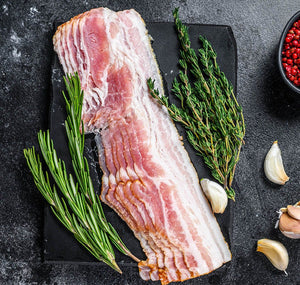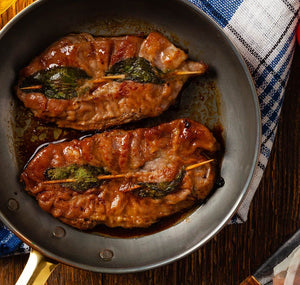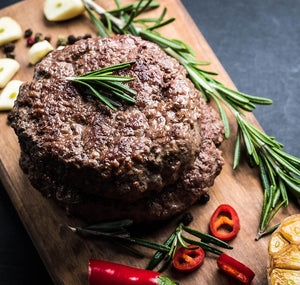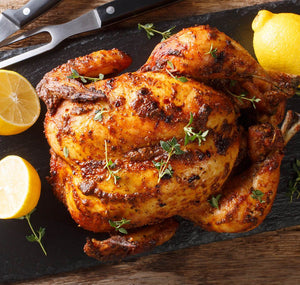Meat glue. It is a topic that we speak about within our team regularly as customers and staff alike have had issues with meat they were previously consuming, only to have intestinal issues arise. A steak should only have one listed ingredient and that is not always the case. For consumers of meat, it is a little-known secret that can have serious impact on their health. Meat Glue (also known as Transglutaminase), has some serious effects on your intestines and can trigger an inflammatory response in your gut. In our opinion… it’s nasty stuff.
However, most customers asking the question are confused about what meat glue actually is. People intuitively know they do not want it, however, the perception that it is simply holding regular pieces of meat together that would otherwise fall apart is incorrect.

It is extremely popular amongst some steak houses and top end restaurants to ensure every dish comes out looking aesthetically perfect and the same. This is why you can have a restaurant dinner with everyone at your large table ordering an Eye Fillet and every single dish can come out looking 100% perfect and identical in shape and size. In reality, this level of uniformity does not exist.
Meat glue is in processed meat items such as bacon wrapped products, smallgoods, chicken items (including breasts and thighs), in seafood for fish balls and surimi and even baked goods. Transglutaminase is commonly used in the baking industry to improve dough stability, elasticity, volume and the ability to absorb water. It is known as a dough conditioner. For those who react to eating pizza or bread this is often the issue.
Meat Glue has been linked to an increased risk of bacterial contamination and may also worsen celiac disease or gluten sensitivity symptoms.
Let us take a deeper dive into what meat glue is, its origins and the controversy behind using it, with it even being referred to as “Australia’s Dirty Secret”.
The Chemical Food Additive
Meat Glue is in fact a food additive which is correctly referred to as Transglutaminase. It is used to improve the texture and appearance of meat products, in particular steaks to create a consistent appearance.
Transglutaminase is an enzyme that works to link proteins together by forming covalent bonds. It can be found naturally in humans and animals in their blood clots, skin, and hair. The natural form can play a key role in blood clotting and sperm production.
However, the transglutaminase used in food is manufactured either from the blood clotting factors of animals like cows and pigs or bacteria derived from plant extracts. It is manufactured and sold in powder form.
The bonding quality of transglutaminase allows food producers to improve the texture of foods or create products. It is even incorporated in imitation crabmeat and chicken nuggets, as it binds different protein sources together. This is why imitation crabmeat is not gluten free.
One study found that adding transglutaminase to chicken sausages made from various chicken parts led to improved texture, water retention and appearance.
Who makes Meat Glue?
The brand name for the leading source of meat glue or transglutaminase is in fact “Activa.” It is manufactured by the Ajinomoto company in Japan. They are well known for also producing Aspartame and MSG (monosodium glutamate). These are two other ingredients we strongly recommend avoiding.

How Is Meat Glue Made?
Most transglutaminase is made from the cultivation of bacteria using the blood plasma (clotting factors) from cows and pigs. It can also be made from cultivating bacteria using vegetable and plant extracts; however, this is not commonly done. Most sources of transglutaminase are blended with other ingredients, including gelatin and caseinate (milk derivative).
Health Safety Concerns
The leading safety concern associated with use of meat glue is the increased risk of bacterial contamination of the foods in which it is present.
When multiple sections of meat are glued together to form one piece, it increases the chances of bacteria being introduced into the food.
Plus, it has been argued by experts that since proteins constructed with meat glue are not one solid piece, it makes the product harder to cook thoroughly.
What’s more, if a piece of meat is assembled using several different protein sources bonded together with transglutaminase, it becomes difficult to identify the source of a bacterial outbreak.
Another concern is that it may negatively impact those with gluten sensitivity or celiac disease.
Transglutaminase may increase intestinal permeability, which can worsen symptoms in people with celiac disease by creating a higher allergenic load on the immune system.
It has even been suggested by medical professionals, that the surge in people diagnosed with celiac disease may be linked to the increased use of transglutaminase in food.
International Bans and Acceptance
In the United States, the Food and Drug Administration (FDA) classifies transglutaminase as GRAS (recognized as safe), and the USDA deems the ingredient safe to use in meat and poultry products. It is however, supposed to be listed as an ingredient, which it is most likely not.
The European Union banned the use of transglutaminase in food in 2010 over safety concerns.
Meat glue is legal for use in Australia. Food Standards Australia New Zealand (FSANZ) have permitted the use of the enzyme, transglutaminase, as a processing aid under the Processing Aids of the food standards Code.
In Australia, meat glue or transglutaminase is not required to be listed on the label as it is only considered to be a processing aid.
In Canada, it is legal but must appear on the label. The Vancouver Sun wrote an article on Meat Glue back in 2011 and referred to it as “Australia’s Dirty Secret”.
Should you avoid Meat Glue?
We would strongly recommend that anyone with weakened immune systems, food allergies, digestive diseases like Crohn’s and those with celiac or gluten sensitivity to avoid foods containing transglutaminase.
We consider this to be in the unhealthy list of ingredients on par with MSG and Aspartame.
The only difference is the greater level of awareness of those ingredients and the need to include them in labelling.
However, if you eat steak at a restaurant, you will normally never know. At a restaurant, we suggest always ordering your meat either on the bone or maybe not ordering the fillet as this most likely will have transglutaminase present.
Your guide to the different Types of Transglutaminases
Activa TG-FP:
Used for beef and pork restructuring. Designed for use with foods high in protein and low in fat. This can be used dry or mixed with water. Contains: transglutaminase, maltodextrin, and skim milk powder.
Activa TG-GB:
"Greatest bond" used for making stronger bonds than the other TGs make, though it cannot be mixed with water and must be added directly. Contains transglutaminase, maltodextrin, gelatin, and anti-caking agents.
Activa TG-GS:
Used for bonding meats; the difference here is that GS can sit out on the counter all day without going bad (deactivating). Contains sodium chloride, gelatin, trisodium phosphate, maltodextrin, transglutaminase, and safflower oil.
Activa TG-RM:
This is the most commonly used form of Transglutaminase. Used for red meat, poultry, seafood, and other muscle foods. Also, for use with foods containing low amounts of protein. Can be used dry or mixed with water. Contains: transglutaminase, maltodextrin, and sodium caseinate (milk derivative.)
Activa TG-TI:
Used for textural improvements to foods that naturally contain protein. Can be used dry or mixed with water. Contains: maltodextrin and double the transglutaminase found in RM or GB.
Activa TG-TIU:
This is the same as TI, but it is the kosher version and is the only kosher meat glue (transglutaminase) commercially available. Contains: maltodextrin and double the transglutaminase found in RM or GB.
Activa TG-YG:
Used for thickening and improving texture in dairy products (yogurt and cheese.) Can be added directly into dairy mixtures. Contains lactose, yeast extract, maltodextrin, vegetable oil, and transglutaminase.
About the Author
Steven Hines is one of the owners and co-founders of Stockman Steaks. His family has been in the meat business for over 5 decades and 3 generations. He has a passion for eating great quality meat and researching the health benefits behind it.
